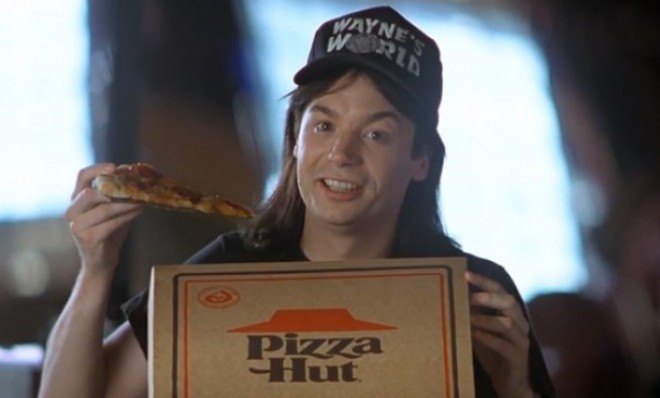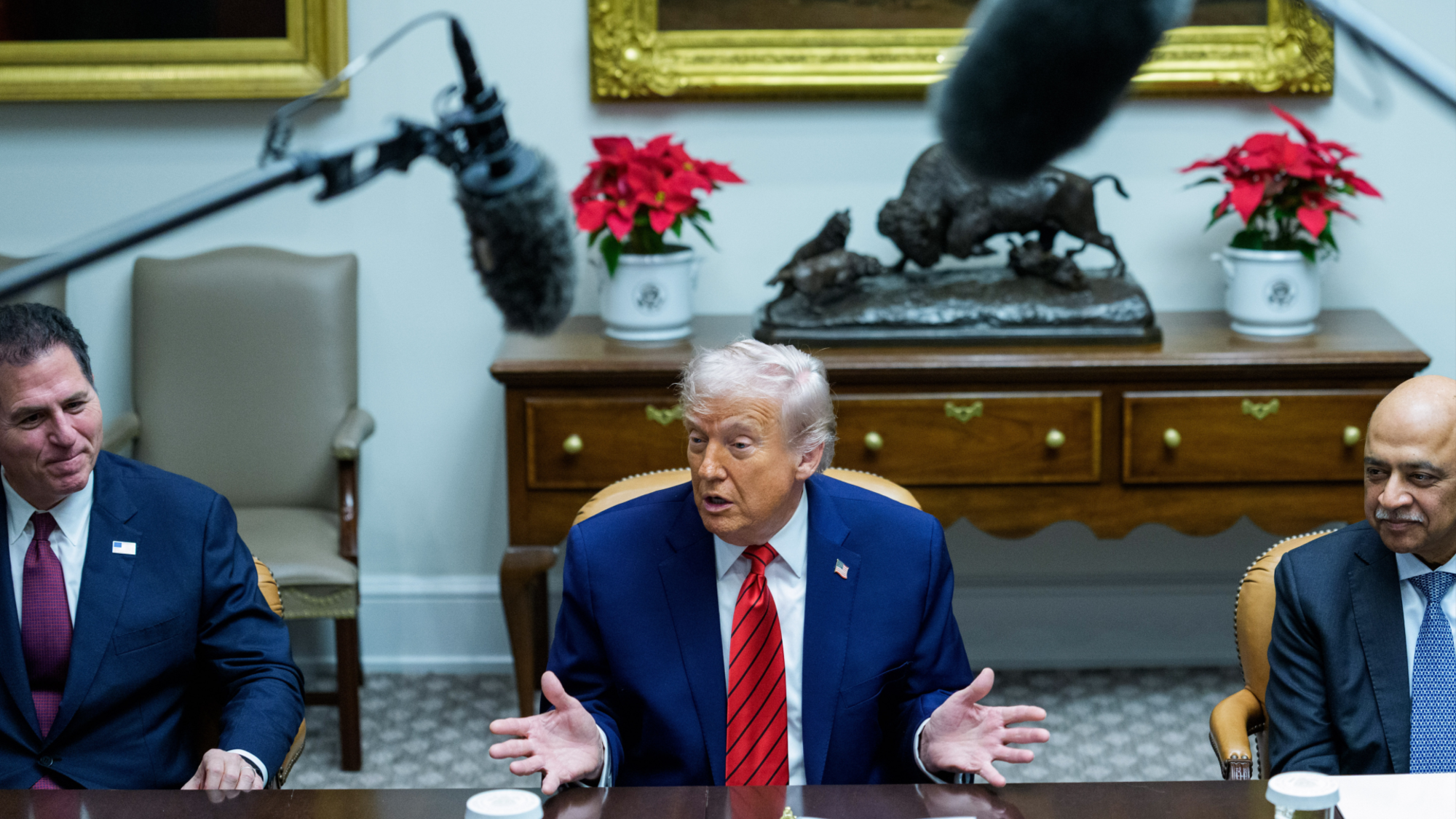The stories behind 10 famous product placements
Seinfeld's famous Junior Mints scene? It almost featured M&Ms


When I saw Run, Fatboy, Run in 2008, I loved it. The movie centers around a marathon called the Nike River Run. This, of course, was accompanied by Nike River Run signs splattered all over London. At one point, the main character receives a brand-spanking-new pair of running shoes — Nike, of course — and is told that they are "the best money can buy."
My first thought was, "I wonder how much Nike paid for that." I read that the filmmakers originally wanted the race to be the London Marathon, but that was already being used by another movie. Thus, the Nike River Run was invented. Nonetheless, I wonder about product placement whenever I see a logo or company name pop up in a movie. Was that a paid deal? Or just something that the movie-makers threw in there?
Here are the answers to some of those questions — including the Seinfeld Junior Mints and the Reese's Pieces from E.T.
The Week
Escape your echo chamber. Get the facts behind the news, plus analysis from multiple perspectives.

Sign up for The Week's Free Newsletters
From our morning news briefing to a weekly Good News Newsletter, get the best of The Week delivered directly to your inbox.
From our morning news briefing to a weekly Good News Newsletter, get the best of The Week delivered directly to your inbox.
1. Junior Mints, Seinfeld
"Who's gonna turn down a Junior Mint? It's chocolate, it's peppermint, it's delicious!" Were truer words ever spoken? But it might not have been that way — other candy companies were originally asked for permission to place their product in that episode. Not seeing the humor in having their bread-and-butter fall into the open chest cavity of a patient, Seinfeld was turned down by M&Ms and Lifesavers (among others) before finally getting to the Junior Mint people. No money exchanged hands between Tootsie Roll (Junior Mints' parent company) and Seinfeld producers. With the amount of product exposure Junior Mints gained from that episode, that's quite a deal.
2. Reese's Pieces, E.T.
Between Seinfeld and E.T., M&Ms has really missed some huge marketing opportunities (not that the company is exactly hurting). The rumor is that Mars, Inc., just didn't think this was a worthwhile movie on which to spend its advertising dollars, but no one has ever substantiated that fact. Whatever the reason is, it was a big mistake — Mars' competitor, Hershey, snapped up the opportunity to promote Reese's Pieces. Hershey agreed to spend $1 million promoting E.T. in exchange for the rights to use E.T. in its ads. The payoff was huge — the delightful little peanut butter candies (can you tell I like Reese's Pieces?) saw a reported 65 percent jump in profits just two weeks after the movie's premiere.
A free daily email with the biggest news stories of the day – and the best features from TheWeek.com
3. Ray-Ban, Risky Business
I used to love that episode of Saved by the Bell when Zack, Slater, and Screech are home alone and they bust out some Risky Business-style moves wearing socks and using brooms as guitars. Anyway. Back to business. At the time, the Wayfarer sunglasses Tom Cruise modeled in that movie were pretty much biting the dust. Annual sales were only about 18,000. After Tom Cruise wore them in the movie (and on the cover of the movie) in 1983, sales skyrocketed to 360,000. By 1989, Ray-Ban had sold more than four million of the Wayfarer model. A bit of trivia for you: Audrey Hepburn wore Wayfarers in Breakfast at Tiffany's, Don Johnson wore them in Miami Vice, Bruce Willis wore them in Moonlighting and ol' Tom Cruise tried them on again for Top Gun. Why such the gap between Audrey and the 80's revival? Well, in 1982, Ray-Ban inked a contract with a product placement company: $50,000 per year to put Ray-Bans in movies and television.
4. Fed-Ex, Cast Away
You cannot escape the product placement of Fed-Ex in Cast Away. It's literally everywhere. And what great publicity — when Fed-Ex manager Chuck Noland washes up on a deserted island, he collects all of the Fed-Ex boxes that washed up with him. While he ends up opening most of them to aid in his survival on the island, he leaves one unopened and returns it to its rightful owner when he makes it back to land many years later. How's that for reliability? CEO Fred Smith even had a cameo in the movie. And what did Fed-Ex pay for all of this? Absolutely nothing. They were reluctant to allow their image and brand to be used at first — the plane crash scene really bothered them. But ultimately, they decided that the movie had a good message and the brand awareness they would get would be worth it.
5. Reebok, Jerry Maguire
This one should be titled "When product placement goes bad." If you think back hard enough, you will remember that Cuba Gooding, Jr's character, Rod Tidwell, held a grudge against Reebok for the entire movie because Reebok wouldn't use him in its ads. Reebok provided more than $1.5 million in merchandise, ads, and promotional materials to be featured in the movie because they thought the ending of the movie would be a little different. Over the closing credits, a fake Reebok commercial was supposed to be shown with Reebok saying, "Rod Tidwell. We ignored him for years. We were wrong. We're sorry." However, that scene got cut. So Reebok ended up investing $1.5 million to have their brand disparaged for a couple of hours. They sued and TriStar Pictures settled out-of-court for an undisclosed amount.
6. White Castle, Harold and Kumar Go to White Castle
I'll admit it — I love Harold and Kumar. (White Castle is OK.) Because of its national recognition, Krispy Kreme was also approached to play a role in the movie. Krispy Kreme was not thrilled by the idea of the brand being so closely associated with a Cheech-and-Chong-esque movie and turned them down. White Castle had no qualms about being featured and even agreed to promote the film with collectible cups, radio ads, and signage. They didn't pay a dime for product placement, however.
7. Staples, The Office
Anyone who is a fan of The Office knows that Staples is Dunder-Mifflin's biggest competitor. That's not just a mere coincidence. The Office has product placement deals with Staples, Hewlett Packard, and Activision's Call of Duty computer game, among others. But the Staples deal is undoubtedly the one that is referenced the most. Not only is the brand mentioned as DM's biggest competitor, but Staples products are shown in virtually every episode. Look closely next time you watch and you could find anything from Staples-brand blank CDs to Staples-brand fax paper. A Staples shredder was even an integral part of one episode, where Kevin demonstrates the power of the shredder by using it to make a salad. While I wasn't able to find how much Staples coughs up to be featured so prominently in the show, it's clear that they are very proud of their affiliation. When one episode featured Dwight quitting his job at Staples to return to Dunder Mifflin, Staples released this memo. A company with a sense of humor? Makes me want to buy my pens there.
8. BMW Z3, GoldenEye
James Bond is apparently one of the most powerful car salesmen in the world. After driving Aston Martins for years, 007 found himself equipped with a BMW Z3 Roadster in 1995's GoldenEye. Sure, it cost them $3 million, but people saw the movie and fell in love with the Roadster. BMW made $240 million in advance sales alone.
9. Slinky, Etch-a-Sketch, Mr. Potato Head; Toy Story
I am a testament to the power of the product placement in Toy Story. But I'll get to that in a minute. When the movie came out in 1995, classic toys like Mr. Potato Head and Slinky weren't doing so great. After being featured as characters in the Pixar/Disney film, sales soared immediately. Etch-a-Sketch saw a 4500 percent boost. Slinkys were no longer being produced because they weren't profitable. Post-Toy Story, Slinky received 20,000 orders, which revitalized the company. Mr. Potato Head sales jumped 800 percent. And that's where I come in. I am a sucker for those big displays at Disney World and Disneyland where you can go through the bin of Potato Head parts and shove as many will fit into a box for $19. I have a ridiculous number of parts, from Tinkerbell's wings to Dumbo's ears to Cruella DeVil's purse. That's double branding right there. Genius.
10. Nuprin, Doritos, Pepsi, Pizza Hut, Reebok; Wayne's World
Finally, we get to my favorite. The fact that I just rattled off all of the brands featured in this brief clip from a movie that came out 16 years ago just goes to show you how effective product placement can be.
More from Mental Floss:
* 5 classic movie moments that weren't in the script
-
 What role will Trump play in the battle over Warner Bros. Discovery?
What role will Trump play in the battle over Warner Bros. Discovery?Today’s Big Question Netflix and Paramount fight for the president’s approval
-
 ‘The menu’s other highlights smack of the surreal’
‘The menu’s other highlights smack of the surreal’Instant Opinion Opinion, comment and editorials of the day
-
 Education: More Americans say college isn’t worth it
Education: More Americans say college isn’t worth itfeature College is costly and job prospects are vanishing
